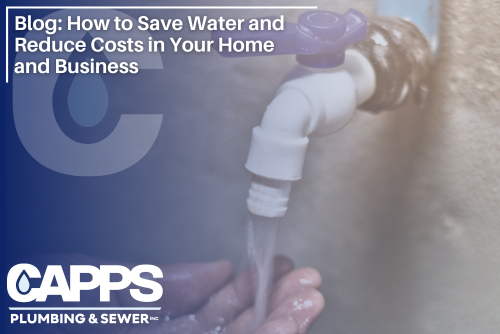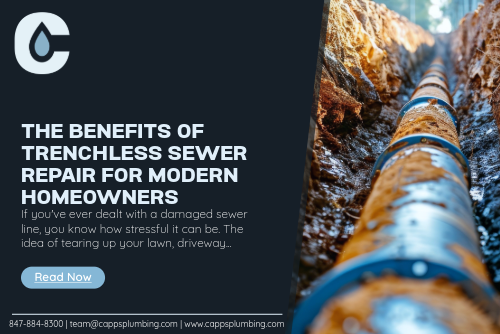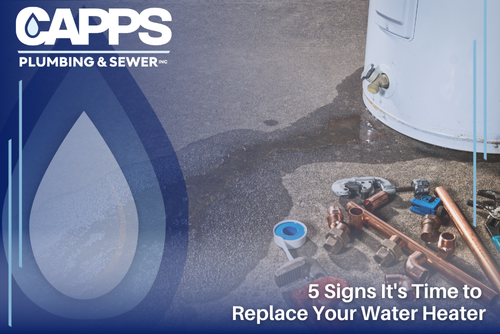A green mentality is a great way to save water and money while upgrading your plumbing system.
This involves using smart practices and tools that use less water and support a more eco-friendly lifestyle. Between installing efficient faucets, embracing tankless water heaters, utilizing greywater systems, and many other solutions, homeowners can reduce their environmental harm while creating a more sustainable place to live. These are key tips to consider for an eco-friendly plumbing upgrade.
1. Installing High-Efficiency Faucets and Showerheads
One easy way to practice green plumbing is to install high-efficiency faucets and showerheads in your plumbing system. Regular fixtures often waste a lot of water because they have high water flow rates.
In comparison, high-efficiency options are made to work well while using much less water. These new fixtures usually have a water flow rate of 1.5 gallons of water per minute, while standard fixtures use 2.2 gallons or more.
By simply replacing your old faucets and showerheads, you can greatly lower your home’s water usage without jeopardizing water pressure.
2. Embracing Tankless Water Heaters
Traditional water heaters store a lot of hot water in a tank, causing standby heat loss and extra energy use. Tankless water heaters are a more sustainable option for hot water.
These tankless models heat water as you need it. They give you an endless supply of hot water only when it is necessary. This means you don’t need to store hot water, which really helps with energy efficiency.
By choosing tankless water heaters, you can save money on your energy bills while helping the environment. This makes them a great option for homeowners looking for eco-friendly plumbing solutions.
3. Utilizing Greywater Systems for Recycling
Greywater systems provide a smart solution to recycle water at home. They gather and clean the safe wastewater from places like showers, bathtubs, and washing machines.
Instead of going to the sewer, the collected greywater is filtered to get rid of dirt. This cleaned water can then be reused for watering plants, flushing toilets, and doing laundry. This process helps preserve fresh water.
Using a greywater system means you save water and lessen the load on septic systems or local treatment plants.
4. Implementing Rainwater Harvesting Techniques
Rainwater harvesting is a great way to use a natural resource and rely less on city water. This method involves gathering and saving rainwater from rooftops and other surfaces for future use.
You can use the collected water for watering plants, flushing toilets, washing clothes and other similar reasons.
By harvesting rainwater, homeowners can save water, decrease stormwater runoff, and lower their water bills. This is a sustainable method to manage water.
5. Upgrading to Low-Flow Toilets
Toilets can consume a lot of water in homes, so it’s a great idea to consider low-flow toilets to save on your water bill.
Low-flow toilets are designed to use much less water per flush while still effectively getting rid of waste. These toilets usually use 1.28 gallons of water or less each time you flush. In contrast, older models might use anything between 3 and 7 gallons.
Using less water in toilets leads to big savings in both water and your bills over time.
6. Considering Sustainable Piping Materials
The kind of piping materials you choose can affect how sustainable your plumbing system is. Older materials, like galvanized steel pipes, are strong but can rust over time. This rust can hurt the quality of your water.
Sustainable plumbing focuses on materials like copper pipes and PEX pipes. Copper pipes last a long time and resist rust very well. PEX pipes, made from cross-linked polyethylene, are flexible and are less likely to leak.
Using sustainable plumbing materials can help cut down on leaks, make maintenance easier, and extend the life of your plumbing system.
7. Adopting Smart Water Monitors
Smart water monitors are helpful tools for saving water at home. These new devices help you see how much water you use in real-time, giving you important insight into your habits and water usage.
Smart water monitors can find leaks, show water use by each fixture, and send alerts if there are unusual changes in usage. This information helps you see where you use a lot of water so you can make changes to save more.
Using smart water monitors lets you take control of your water usage.
8. Exploring Solar Water Heating Options
Solar water heating uses the sun’s energy to heat water for your home. This green option requires you to put solar panels on your roof to collect solar energy.
The sun’s heat warms a fluid in a water heater, increasing the water’s temperature. By using solar energy, homeowners can cut down on their water bills by naturally heating their water.
Solar water heating is a great way to reduce your carbon footprint and can help you save money on your energy bill.
9. Prioritizing Leak Detection and Repair
Even small leaks in your plumbing system can waste a lot of water over time. A dripping faucet or a leaking toilet may seem small, but they can lead to large water loss. This means more expensive water bills.
It is very important to maintain your plumbing system regularly to find and fix leaks quickly. Check your fixtures, pipes, and appliances often for signs of leaks.
Finding and repairing leaks on time can save water and prevent property damage.
10. Investing in Water-Efficient Appliances
In addition to having water-saving fixtures, think about upgrading your home appliances to be more eco-friendly. When you buy dishwashers and washing machines, look for good water efficiency ratings.
These appliances are made to use less water during each cycle while still working well. New, water-efficient appliances often use smart technology to improve water usage. For example, some have sensors that change the amount of water based on how much you are washing.
By choosing water-efficient appliances, you can cut back on your home’s water consumption.
Install Eco-friendly Plumbing Solutions
Making your home more eco-friendly with sustainable plumbing can help the environment and save you money over time. You can use high-efficiency faucets and rainwater harvesting. These choices help with water conservation and lower your carbon footprint. When you invest in friendly plumbing, you support a healthier planet and save on utility bills. Embrace these methods to make a better future for the next generations. For more details on installing these solutions in your home, contact Capps Plumbing today!






